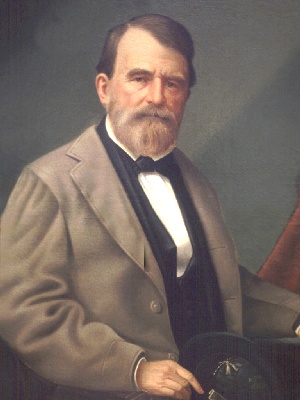John McEnery (politician) facts for kids
Quick facts for kids
John McEnery
|
|
|---|---|

John McEnery's portrait, 1880s
|
|
| 25th Governor of Louisiana | |
| In office January 13, 1873 – May 22, 1873 Disputed with William P. Kellogg |
|
| Lieutenant | Davidson B. Penn |
| Preceded by | P. B. S. Pinchback |
| Succeeded by | William P. Kellogg |
| In office September 14, 1874 – September 16, 1874 Disputed with William P. Kellogg |
|
| Personal details | |
| Born | March 31, 1833 Petersburg, Virginia, U.S. |
| Died | March 28, 1891 (aged 57) New Orleans, Louisiana, U.S. |
| Political party | Democratic |
| Other political affiliations |
Liberal Republican (1870–1872) |
| Military service | |
| Allegiance | |
| Branch/service | |
| Years of service | 1861–1864 |
| Rank | |
| Commands | 4th Louisiana Infantry Battalion |
| Battles/wars | American Civil War |
John McEnery (born March 31, 1833, in Petersburg, Virginia – died March 28, 1891) was a lawyer and politician from Louisiana. He was a member of the Democratic Party. McEnery was at the center of a big argument over who won the 1872 election for Governor of Louisiana. Even though many Democrats thought he won, the Republican candidate, William Pitt Kellogg, was officially declared the winner. McEnery, who had served as an officer in the Confederate States Army during the American Civil War, was not allowed to take office. This decision was made by the federal government and local Republicans who supported President Ulysses S. Grant.
Contents
The Disputed 1872 Election
In the 1872 election, John McEnery, a Democrat, had strong support. He was backed by a group of Democrats and some Republicans who did not agree with President Grant. This group included the current Republican Governor, Henry C. Warmoth.
However, other Republicans remained loyal to President Grant. They supported the Republican candidate, William Pitt Kellogg. Governor Warmoth had chosen the State Returning Board. This board was in charge of counting votes and managing elections.
A different group, supporting Kellogg, also claimed to be the official board. This led to a lot of confusion and arguments. Governor Warmoth was even removed from office for a short time because of claims he tried to unfairly influence the election. The lieutenant governor, P. B. S. Pinchback, became governor for the last 35 days of Warmoth's term.
Both McEnery and Kellogg held parties to celebrate their "inauguration." Both also had lists of local officials they claimed were elected. In the spring of 1873, McEnery and his supporters formed a separate group in New Orleans. They claimed to be the real state legislature.
The Battle of Liberty Place
After the election dispute, tensions grew in Louisiana. In 1873, McEnery's supporters tried to take control but failed. Then, on September 14, 1874, about five thousand armed men who supported McEnery marched into New Orleans. They fought against the police and the state militia.
These men took over the statehouse and the armory. They forced Republican Governor Kellogg out of office. This event became known as the Battle of Liberty Place. The forces supporting McEnery only left New Orleans when federal troops were on their way to restore order.
Before this event, McEnery had given a speech in June. He spoke about the deep divisions between white and Black people in Louisiana. He suggested that if the rights of white people were not protected, a conflict would happen. He believed that white people needed to unite to solve Louisiana's political problems.
Widespread Tensions and Conflicts
The long argument over the election led to violence across Louisiana. One sad event was the Colfax Massacre on Easter Sunday in 1873. This event was directly connected to the disputed election. White groups from nearby areas attacked Black Republicans. These Black citizens had gathered at the Colfax courthouse to protect Republican officials. More than 80 Black men were killed, while three white men died. Rumors and rising tensions had made the situation very dangerous.
Another similar event happened in Coushatta. There, a powerful Republican state senator named Marshall H. Twitchell was influential. White groups forced six Republican officials to leave town. However, these officials were killed before they could leave the state.
In 1874, some white men in Grant Parish formed the first chapter of a group called the White League. Many of these men had been part of the group at Colfax. The White League was a private military-like group that supported the Democratic Party. Their goal was to remove Republicans from power and limit the voting rights of Black citizens. Grant Parish and Colfax were new areas created during the Reconstruction era. They were named after President Grant and Vice President Schuyler Colfax.
McEnery's Legacy
John McEnery's strong support for white supremacy was well-known. This helped his brother, Samuel McEnery, get elected as Lieutenant Governor of Louisiana in 1880. Samuel McEnery later became governor after Governor Louis Wiltz died. He stayed in office until 1888.

